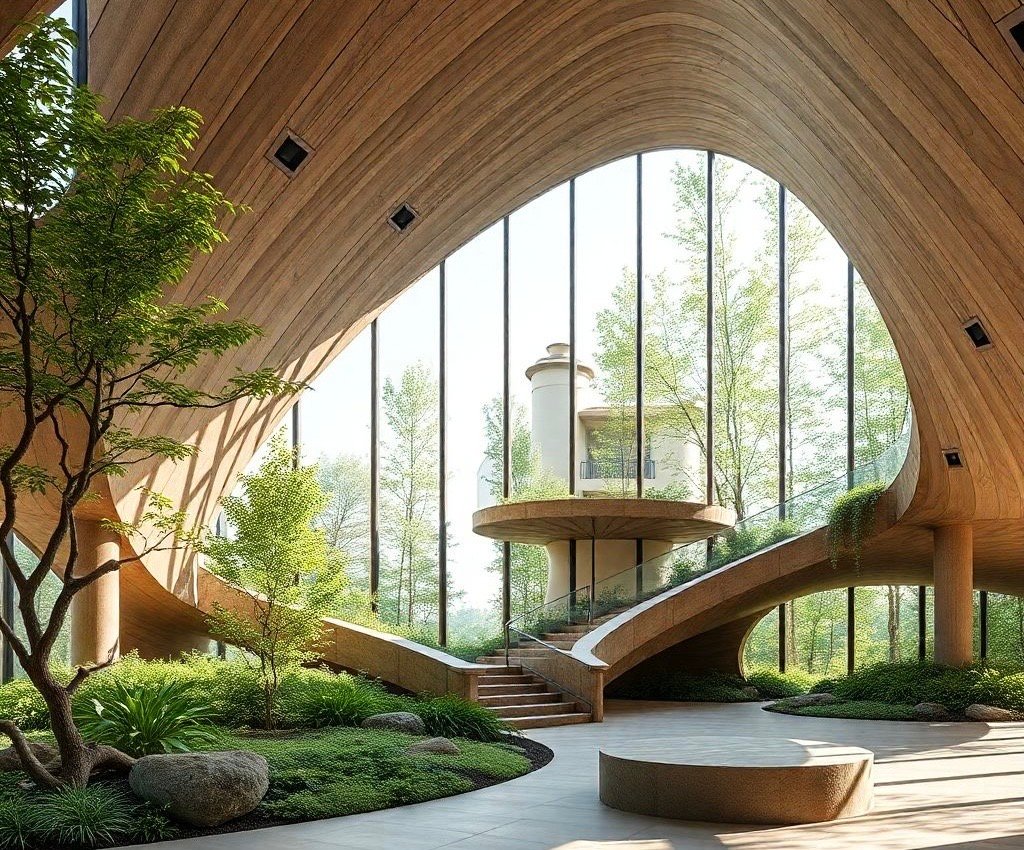
Eco-design in architecture is an approach that prioritizes sustainability, environmental responsibility, and the efficient use of resources. The aim is to create buildings that minimize their ecological footprint while enhancing the quality of life for their occupants. To achieve these objectives, several best practices should be adopted by architects and designers.
Eco design in Architecture.Key Takeaways and Actionable Steps
1. Prioritize passive design principles.
2. Choose sustainable and locally sourced materials.
3. Implement water-saving devices and systems.
4. Integrate renewable energy technologies.
The Urgent Need for Sustainable Architecture
The building sector contributes nearly 39% of global carbon emissions, with a significant portion from construction and operation. Traditional methods often lead to excessive waste and resource depletion. An urgent shift is needed toward eco-friendly practices.
The Promise of Eco-Design: Balancing Aesthetics and Sustainability
Demand for green buildings is skyrocketing. People want spaces that are not only beautiful but also kind to our planet. This has brought concepts like passive design and renewable energy integration to the forefront of architectural planning.
Passive Design Strategies: Harnessing Natural Resources
Optimizing Building Orientation and Shading
Building orientation plays a critical role in energy use. Solar orientation in structure design focuses on maximizing sunlight exposure for energy efficiency.
Buildings should be arranged to capture sunlight during peak hours, reducing heating and cooling costs. Proper placement of windows, overhangs, and shading devices can enhance natural light while minimizing glare.
Using materials that reflect or absorb heat can further improve energy performance.
This approach not only lowers utility bills but also creates a more comfortable indoor environment. Sustainable design practices benefit from careful planning around solar orientation, making structures more eco-friendly.
Techniques like overhangs and louvers help control heat gain while still allowing natural light inside. Many building codes now encourage these strategies for energy efficiency.
Natural Ventilation and Daylighting
Natural ventilation is a game changer for indoor air quality, making buildings feel fresher and more comfortable.
Sites like the Bosco Verticale in Milan showcase the successful integration of these elements. Daylighting techniques reduce reliance on artificial lighting, enhancing thermal comfort.

Material Selection for Thermal Performance
Using thermal mass and effective insulation can drastically improve a building’s energy efficiency. High-performance materials, such as spray foam and cellulose, help minimize losses.
Data suggests that using quality insulation can cut energy costs significantly.
Sustainable Material Selection: Minimizing Environmental Impact
Embodied Carbon and Life Cycle Assessment (LCA)
Embodied carbon is the total greenhouse gas emissions tied to a material throughout its life cycle. Tools for LCA help architects assess choices. Selecting materials wisely reduces transportation impact and overall carbon footprint.
Locally Sourced and Recycled Materials
Choosing locally sourced and recycled materials supports the economy and reduces environmental strain. For instance, projects that use reclaimed wood not only tell a story but also cut down on waste. Research shows that recycled materials can save up to 74% in emissions compared to new materials.
Eco design in Architecture Bio-Based and Renewable Materials
Innovative materials like bamboo offer exciting possibilities. These options are renewable and often more sustainable than traditional materials. Experts predict a growing role for bio-based materials in the future of construction.
Water Conservation and Management: Reducing Water Footprint
Efficient Plumbing Fixtures and Appliances
Incorporating water-saving fixtures, like low-flow toilets and showerheads, can make a significant difference. Greywater recycling systems further reduce waste by repurposing water for landscaping.
Rainwater Harvesting and Greywater Recycling
Rainwater harvesting collects water for irrigation and non-potable uses, easing demands on municipal systems. Buildings that effectively utilize these systems, like the Bullitt Center in Seattle, serve as benchmarks for innovation. These systems enhance sustainability, particularly in urban settings.
Renewable Energy Integration: Powering Sustainable Buildings
Photovoltaic (PV) Systems and Solar Thermal Collectors
Solar energy is a powerhouse for sustainable designs. Integrating photovoltaic panels allows buildings to generate their own electricity. Examples like The Edge in Amsterdam demonstrate the potential of building-integrated photovoltaics (BIPV). These systems can produce a substantial amount of the building’s energy needs.
Geothermal Energy and Ground Source Heat Pumps
Ground source heat pumps use this energy to heat and cool buildings. These systems tap into the stable temperature just below the surface. They transfer heat to or from the ground, making them efficient.
By using energy from the Earth, they reduce reliance on fossil fuels. This helps lower greenhouse gas emissions, benefiting the environment. Installation costs can be high, but savings on energy bills can make it worthwhile over time.
Many homeowners are turning to this technology for its long-term benefits.
Wind Energy Integration (where applicable)
In certain areas, wind energy can boost a building’s sustainability. Smaller wind turbines can be integrated into designs where applicable. Proper planning considers factors like wind speed and noise, ensuring the energy solution fits for the site.
Conclusion:
Embracing Sustainable Practices for a Greener Built Environment.Implementing these best practices leads to healthier living spaces. As you plan your next project, remember that every small choice can make a big difference.